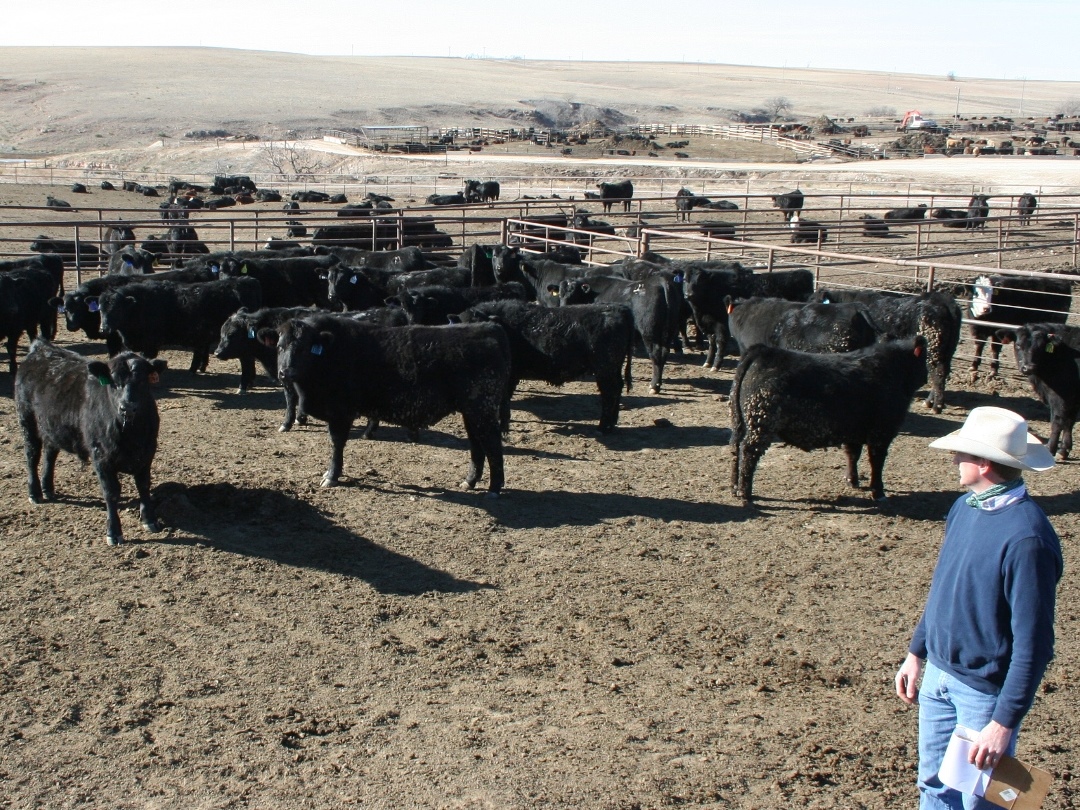Value-added cattle program helps producers boost the bottom line
Thursday, November 10, 2016

Oklahoma cattle producers looking for a competitive advantage should consider a trip to Ellis County to participate in the annual OK Steer Feedout.
For more than 30 years, the information feedback program has successfully helped producers improve their marketability and profitability by providing crucial data on the genetic merit of their calves produced for feedlot performance and carcass merit.
“I’ve done it in the past because that’s the only way you know what your cattle will do,” said Sammy Richardson, a Stephens County producer based near Marlow. “In other words, if you don’t feed in the feedlot and know your cattle will grade and know your cattle will gain and they have that disposition and then to grade choice, you’re just spinning your wheels.”
In fact, Richardson is planning to contribute seven steers to this year’s feedout, which begins Nov. 13-14. It will mark his sixth time participating in the initiative, which has generally always been a positive experience for the producer.

Operated through the Oklahoma Cooperative Extension Service, the OK Steer Feedout works like this: Producers deliver at least five, but no more than 25 steers to the site of the feedout, Cattlemen’s Choice Feedyard, Inc., in Gage.
There, cattle are processed, put on feed and monitored for health and growth on the 200-acre feedyard.
At the end of the feeding period, cattle are harvested and producers receive a detailed summary of feeding and carcass data on each steer. The summary report includes information such as beginning and final weight, average daily gain, calculated profit/loss, calculated yield grade, marbling score, quality grade premiums and carcass value.
The ultimate goal of all the feeding and monitoring and reporting? Valuable knowledge participating producers can use in marketing their calves.
“When a producer takes a group of calves out of his herd, hopefully it’s a snap shot of his calf crop production. If he feeds five or eight calves with us, then we look at what percentage grade choice, what percentage grade high choice, we look at yield grade and quality grade and it better helps the producers understand or be aware of any carcass premiums that would be available to them, either if they chose to participate in a cattle feeding venture or if they market their calves to a group that’s interested in value-added cattle production,” said Greg Highfill, Woods County Extension educator, agriculture/4-H.
Although it’s been more than three decades since Wayne Shearhart, a visionary Extension agent based in Lincoln County, launched OK Steer Feedout in 1984, the premise of the initiative has not shifted much.
“Maybe there are more marketing opportunities now for high quality product, but the need for knowledge of what you’re producing and being able to market it, that is still the same,” said Highfill, who has been affiliated with the program since 1987.
“Wayne knew this more intense beef production system was possible given the genetics and performance we added to the herd, even in the 80s, and wanted to help producers market their increased performance by finding out the carcass value of the calves they produced. Really nothing has changed to this day,” Highfill said.
Over the past five years or so, the OK Steer Feedout has drawn six to 10 ranches annually. Some are repeats, some are new.
Cattlemen’s Choice Feedyard Inc. has hosted the OK Steer Feedout for the better part of the past decade. Owner Dale Moore, who purchased the feedyard with his wife, Mary, in 2000, has seen both the program and the cattle evolve.
“Probably the biggest change is we required more participation from the producers, requiring them to wean their cattle for a minimum of 45 days,” said Moore, who carries more than 30 years of experience in the business. “To me, that was a new technology, so to speak, or a new practice that needed to be implemented to teach these producers what they can do on the ranch and how the outcome can be so much better by putting in a little bit of effort on their part.”
Moore also has noticed a difference in the cattle coming through the feedout.
“Another thing I’ve seen is the change in the quality of the cattle because producers are learning what their cattle actually are,” he said. “They’re able to make some genetic ranch management changes to influence better marketing to influence better profitability back to the ranch.”
A huge proponent of the feedout because of its tight focus on educating producers on critical industry best practices, Moore strongly encouraged others to take advantage of what the program has to offer.
“It’s the same no matter whether they want to put five head on feed or 50 head on feed, the best pitch is simply if you’re trying to make financial decisions for the ranch and you have a product to market, rather than just taking whatever the market gives you, the more you know about your cattle, the more you know about the product and the end result that’s going to the consumer, the better marketer you are,” he said. “This is a tremendous program to really tell the producers what they’re producing other than just an animal that eats.”
REPORTER/MEDIA CONTACT:
Leilana McKindra
Communications Specialist
Agricultural Communications Services
140 Agriculture North
Oklahoma State University
Stillwater, OK 74078
Phone: 405-744-6792
Fax: 405-744-5739
Email: leilana.mckindra@okstate.edu
